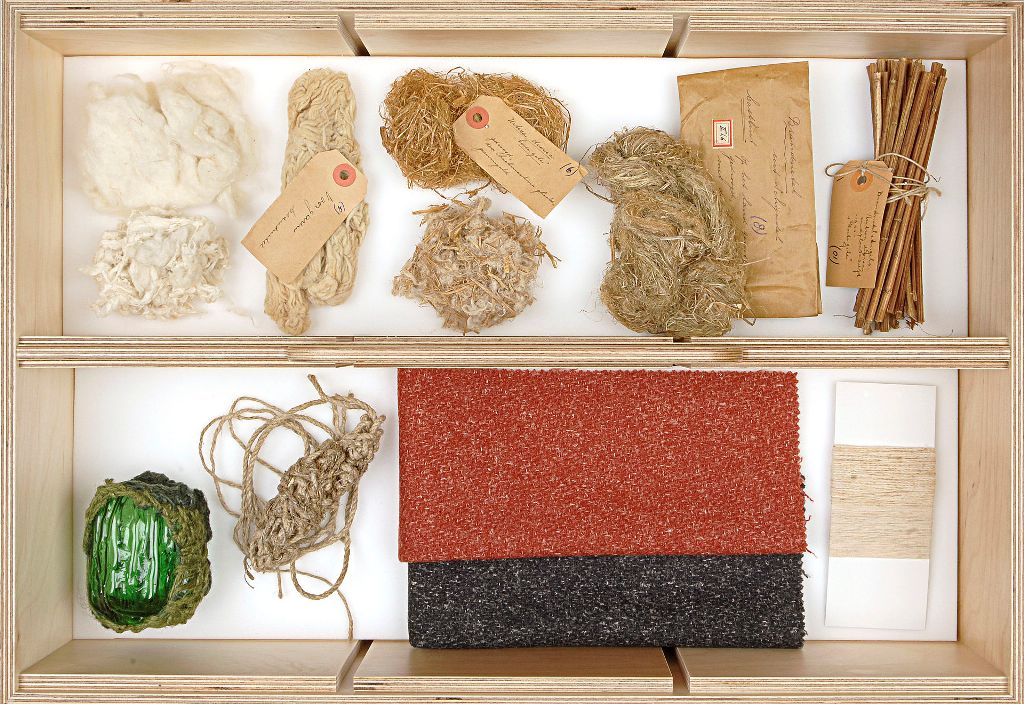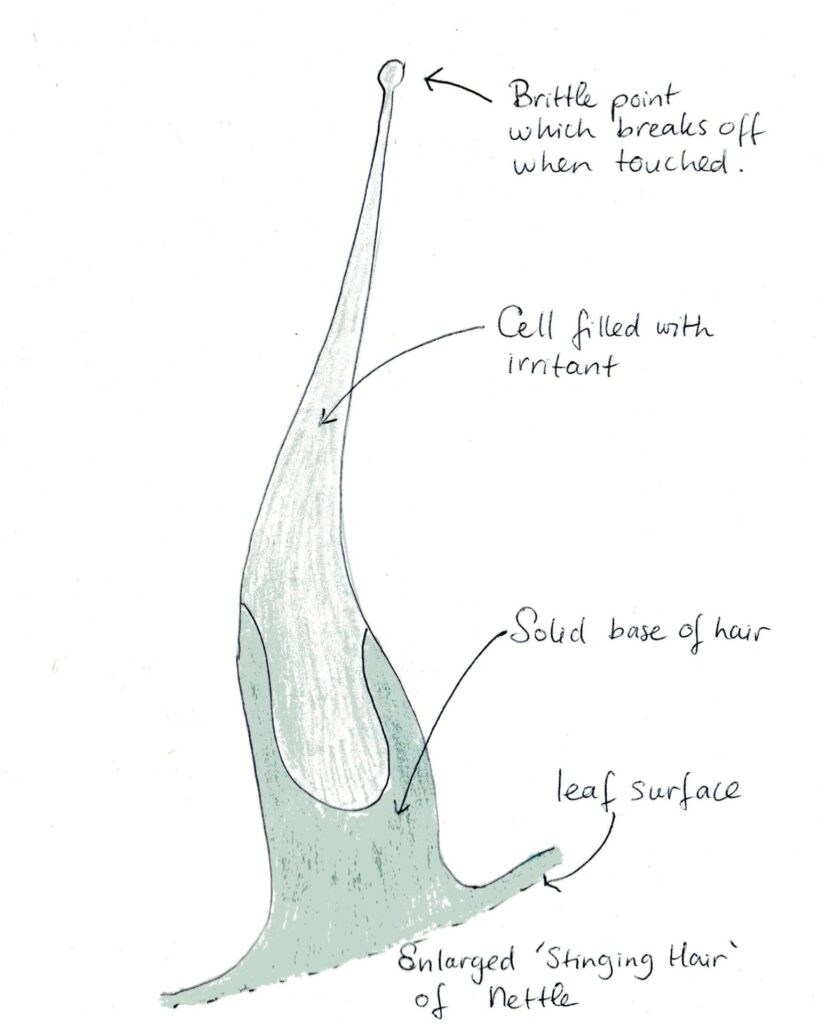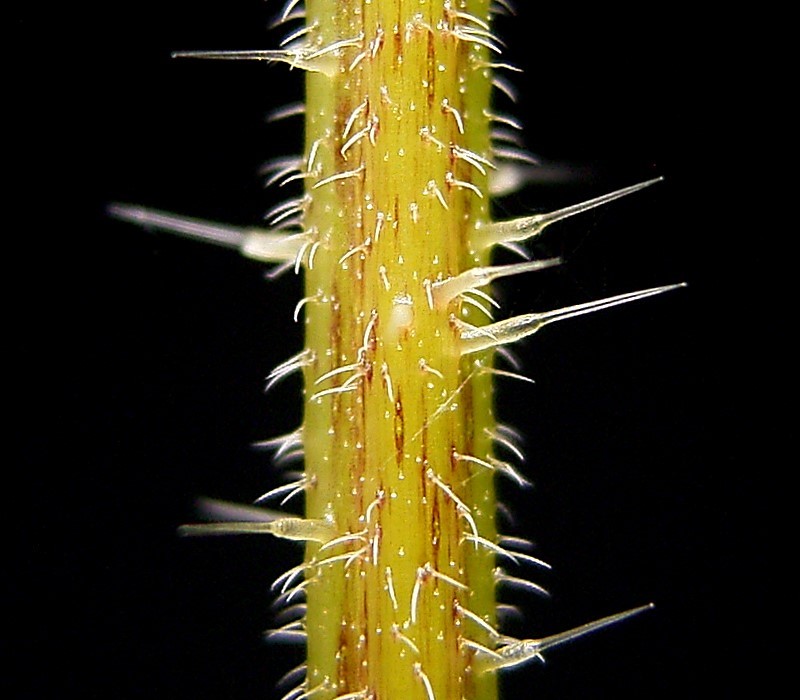The nettle is a most useful plant for many different purposes. The Nettles are part of the Nettle family (Urticaceae) and has some other native genera as well, which you will find out below.

This time of the year the nettle is just emerging again from its wintersleep!
It is family number 54 in Stace and besides the genus Urtica, which has 2 native species, it also has 2 other genera + species occurring in the B.I. namely the useful Parietaria judaica (Pellitory-of-the-wall) and an ornamental, low creeping plant with very small leaves, sometimes seen as a houseplant, called Soleirolia soleirolii with the very funny common name: ‘Mind-your-own-business’.
I have seen this plant much more frequently in the last few years in Walsall gardens too and many gardeners find this a menace!
“ The 3 genera appear very different vegetatively, but are characterised by their inconspicuous, unisexual flowers with 4 perianth segments, 4 stamens, 1-celled superior ovary with 1 ovule, 1 style and densely branched stigma”. The Common Nettle (Urtica dioica) is very variable, especially in leaf shape and hairiness, stingless, subglabrus and monoecious variants are known.” (Stace)
The other native nettle is not as well-known and is the annual Small Nettle (Urtica urens). Apparently this is an archaeophyte and often occurs in cultivated and waste ground. As with many leafy plants, they are often an indicator of good soil.
I use colour coding for easy reading! Blue background is general interesting info (although I hope you find it all interesting!!). Green is about all the uses except for medicinal uses or if there is a warning in which case I use a pink background
Most of the below information comes from Wikipedia, the Free Encyclopedia for which I am very grateful. For ease of reading in my blog I will as usual edit all the information and place in bullet points. Colour coding for ‘easy reading’. Blue background for general interesting information. Green for all sorts of uses and pink for medicinal uses or warning for poisonous and in this case the sting of the nettle!
The most fascinating fact about the Nettle is the Sting!
This sting is caused by trichomes , which are specially adapted hairs filled with an irritant making the stinging sensation. “The leaves and stems are very hairy with non-stinging hairs, and in most subspecies, also bear many stinging hairs (trichomes or spicules), whose tips come off when touched, transforming the hair into a needle that can inject several chemicals causing a painful sting or paresthesia.
Urtica dioica produces its inflammatory effect on skin (stinging, burning sensation often called “contact urticaria” (The term, contact urticaria, has a wider use in dermatology, involving dermatitis caused by various skin irritants and pathogens) ) both by impaling the skin via spicules – causing mechanical irritation – and by biochemical irritants, such as histamine, serotonin, and choline, among other chemicals. Anti-itch drugs, usually in the form of creams containing antihistamines or hydrocortisone, may provide relief from nettle dermatitis.
In Great Britain, the use of dock leaves on nettle stings is an established folk remedy, and revolves around the sap released from rubbing the leaf over affected areas of skin, which provides a cooling sensation. Docks and nettles regularly grow in the vicinity of each other due to both plants favouring the same soil conditions, and this may have aided the dock’s popularity as a treatment for nettle stings.
The nettles are a nutritious plant as well as medicinal but this also depends on where it grows.
In Europe, nettles have a strong association with human habitation and buildings. The presence of nettles may indicate the site of a long-abandoned building. Human and animal waste may be responsible for elevated levels of phosphate and nitrogen in the soil, providing an ideal environment for nettles. This phosphate and nitrogen can be recycled as compost made of nettles or in the form of liquid manure.
It is often a pioneer plant making the ground better for other plants to follow in succession.
Food plants for wildlife:
- Although nutritious, it is not widely eaten by either wildlife or livestock, presumably because of the sting.
- Nettles are the exclusive larvalfood plant for several species of butterflies, such as the peacock butterfly, comma (Polygonia c-album), and the small tortoiseshell. It is also eaten by the larvae of some moths including angle shades, buff ermine, dot moth, the flame, the gothic, grey chi, grey pug, lesser broad-bordered yellow underwing, mouse moth, setaceous Hebrew character, and small angle shades. The roots are sometimes eaten by the larva of the ghost moth Hepialus humuli.
Food for us:
The nettle is now a well-known plant to forage for and use cooked as a substitute for spinach. Later in the year some of the plant can be cut back to make it re-grow and give a new supply of young, edible tops.
There are many recipes on the internet to use nettles and if you have a large garden it is useful to keep some available for this purpose, but also please leave some for wildlife (see above).
Soaking stinging nettles in water or cooking removes the stinging chemicals from the plant, which allows them to be handled and eaten without injury.
After the stinging nettle enters its flowering and seed-setting stages, the leaves develop gritty particles called cystoliths, which can irritate the urinary tract.
Fresh leaves contain approximately 82.4% water, 17.6% dry matter, 5.5% protein, 0.7 to 3.3% fat, and 7.1% carbohydrates. Mature leaves contain about 40% α– linolenic acid, a valuable omega-3 acid. Seeds contain much more fatty acid than leaves. Minerals (Ca, K, Mg, P, Si, S, Cl) and trace elements (Mn, Cu, Fe) contents depend mostly on the soil and the season.
- Urtica dioica has a flavour similar to spinach mixed with cucumber when cooked, and is rich in vitamins A and C, iron, potassium, manganese, and calcium.
- In its peak season, nettle contains up to 25% protein, dry weight, which is high for a leafy green vegetable.
- The leaves are also dried and may then be used to make a herbal tea, as can also be done with the nettle’s flowers.
- Nettles can be used in a variety of recipes, such as polenta, pesto, and purée. Nettle soup is a common use of the plant, particularly in Northern and Eastern Europe.
- Nettles are sometimes used in cheese making, for example in the production of Cornish Yarg and as a flavouring in varieties of Gouda cheese (from the Netherlands).
Drink for us:
Nettle leaves are steeped in a concentrated sugar solution to extract the flavour. The leaves are then removed and a source of citric acid (usually lemon juice) is added to help preserve the cordial and add a tart flavour.
Also, many recipes for alcoholic nettle beer are used, which is a countryside favourite in the British Isles.
Most of this information comes from Hedgerow Medicine.
- Nettle top tea for spring tonic
- Blood tonic against anaemia as nettle high in soluble iron.
- Blood cleanser of urates and toxins
- Tea for treatment in gout and arthritis
- Against high as well as low blood pressure
- For coughs and allergies such as hay fever as nettle has antihistamine effect
- Good for problems with the skin and high blood sugar.
- Regulates breast milk production
- Externally it is used for cuts and wounds and it makes a good hair tonic
In the traditional Austrian medicine dioica herb has been used internally (as tea or fresh leaves) to treat disorders of the kidneys and urinary tract, gastrointestinal tract, locomotor system, skin, cardiovascular system, hemorrhage, influenza, rheumatism, and gout.
Other Uses:

Nettle stems contain a bast fibre that has been traditionally used for the same purposes as linen and is produced by a similar retting process. Unlike cotton, nettles grow easily without pesticides. The fibres are coarser, however.
Historically, nettles have been used to make clothing for 2,000 years, and German Army uniforms were almost all made from nettle during World War I due to a potential shortage of cotton. More recently, companies in Austria, Germany, and Italy have started to produce commercial nettle textiles. Found some example of modern nettle clothing here
Nettles may be used as a dye-stuff, producing yellow from the roots, or yellowish green from the leaves.
- Nettles are one of the homoeopathic ingredients in the Biodynamic Preparations
In the UK, an annual World Nettle Eating Championship draws thousands of people to Dorset, where competitors attempt to eat as much of the raw plant as possible. Competitors are given 60 cm (24 in) stalks of the plant, from which they strip the leaves and eat them. Whoever strips and eats the most stinging nettle leaves in a fixed time is the winner. The competition dates back to 1986, when two neighbouring farmers attempted to settle a dispute about which had the worst infestation of nettles.

A spring-germinating annual of well-tilled arable land, especially fields of broad-leaved crops, and also allotments, gardens, farmyards and waste ground. It prefers light, often sandy, soils of high fertility. (from Online Atlas)
It is used in homeopathy
and has also similar other uses to the perennial nettle.
Parietaria judaica or Pellitory of the wall
This little and overlooked wild plant is a noted tonic for the kidneys and bladder. It is soothing and increases the flow of urine, while also reducing inflammation and helping dissolve kidney stones. Herbalists use the tea for a range of urinar problems. (from Hedgerow Medicine)
Soleirolia soleirolii or ‘Mind-your-own-business’

This is not a native but comes from northern Mediterranean according to Wikipedia. By many garden owners this is considered a weed as it spreads rather rapidly. It prefers shade and moderate moisture. It can even grow submerged in swampy environments. In colder regions, the plant dies back during winter, but it returns with lush growth as the temperature increases.
It can be grown indoors as a houseplant and used in habitats for amphibians.
Nurseries grow several varieties, including gold, yellow, and white breeds, but the mossy-green type is most popular with (some!) gardeners.




